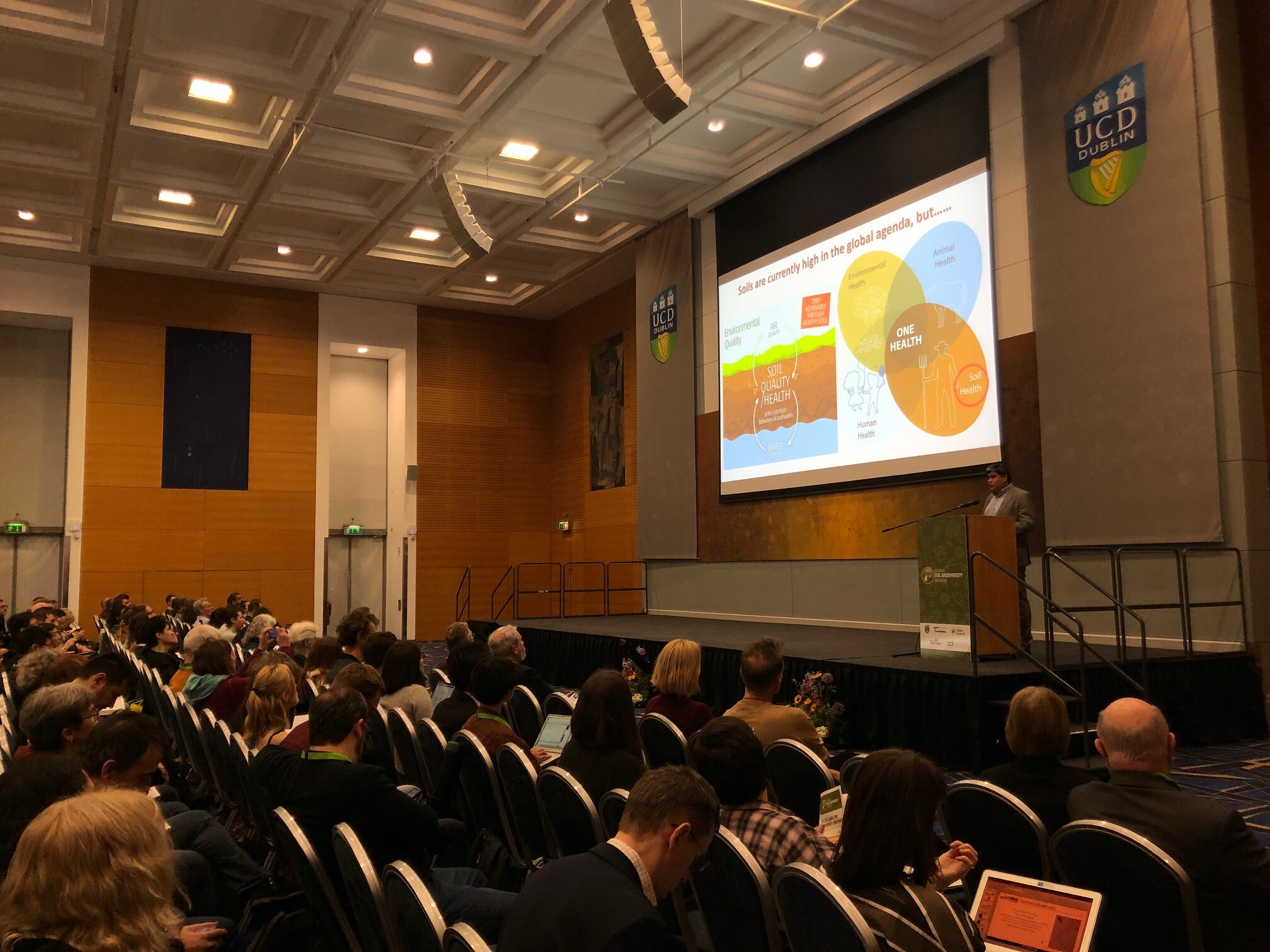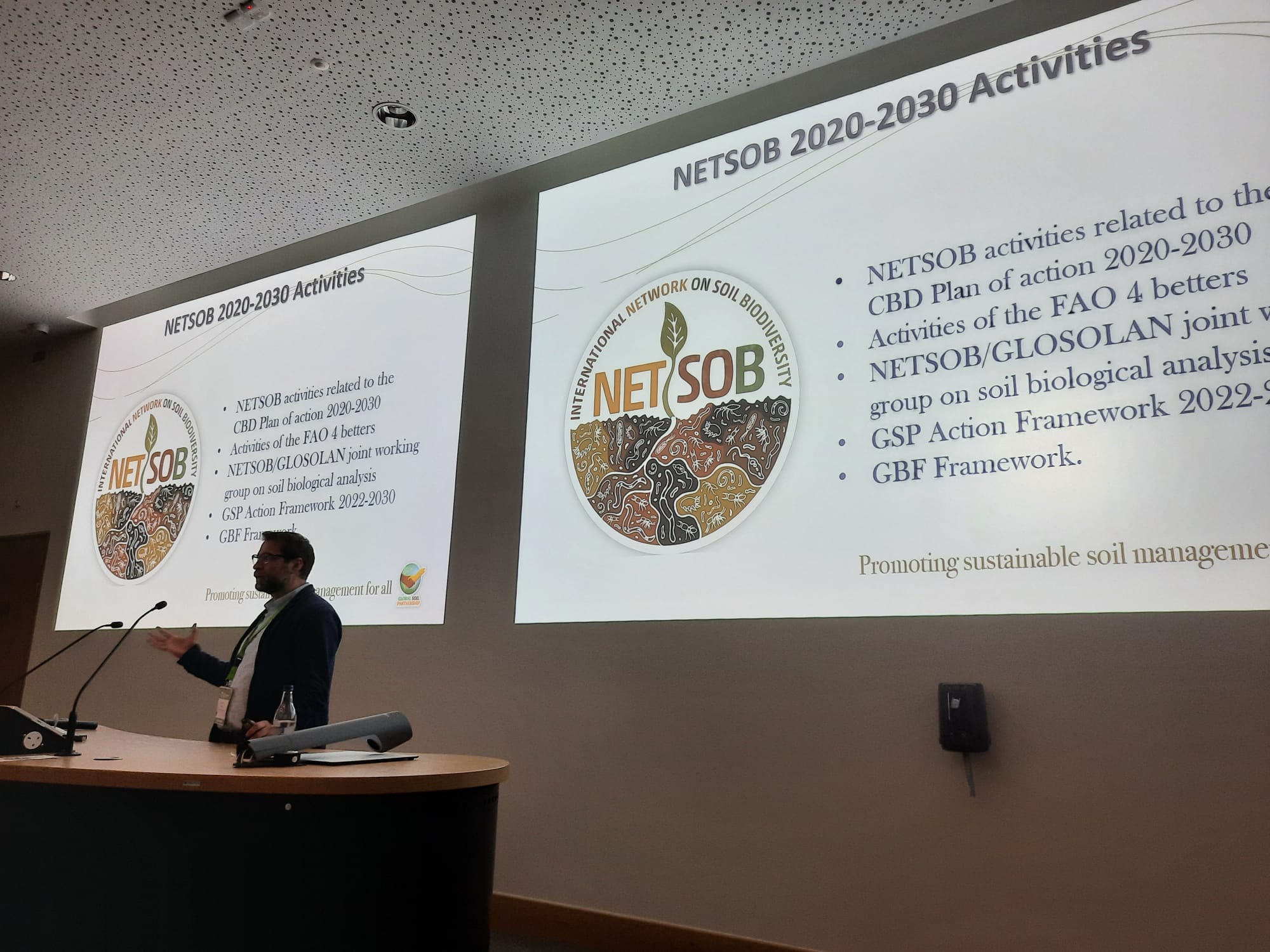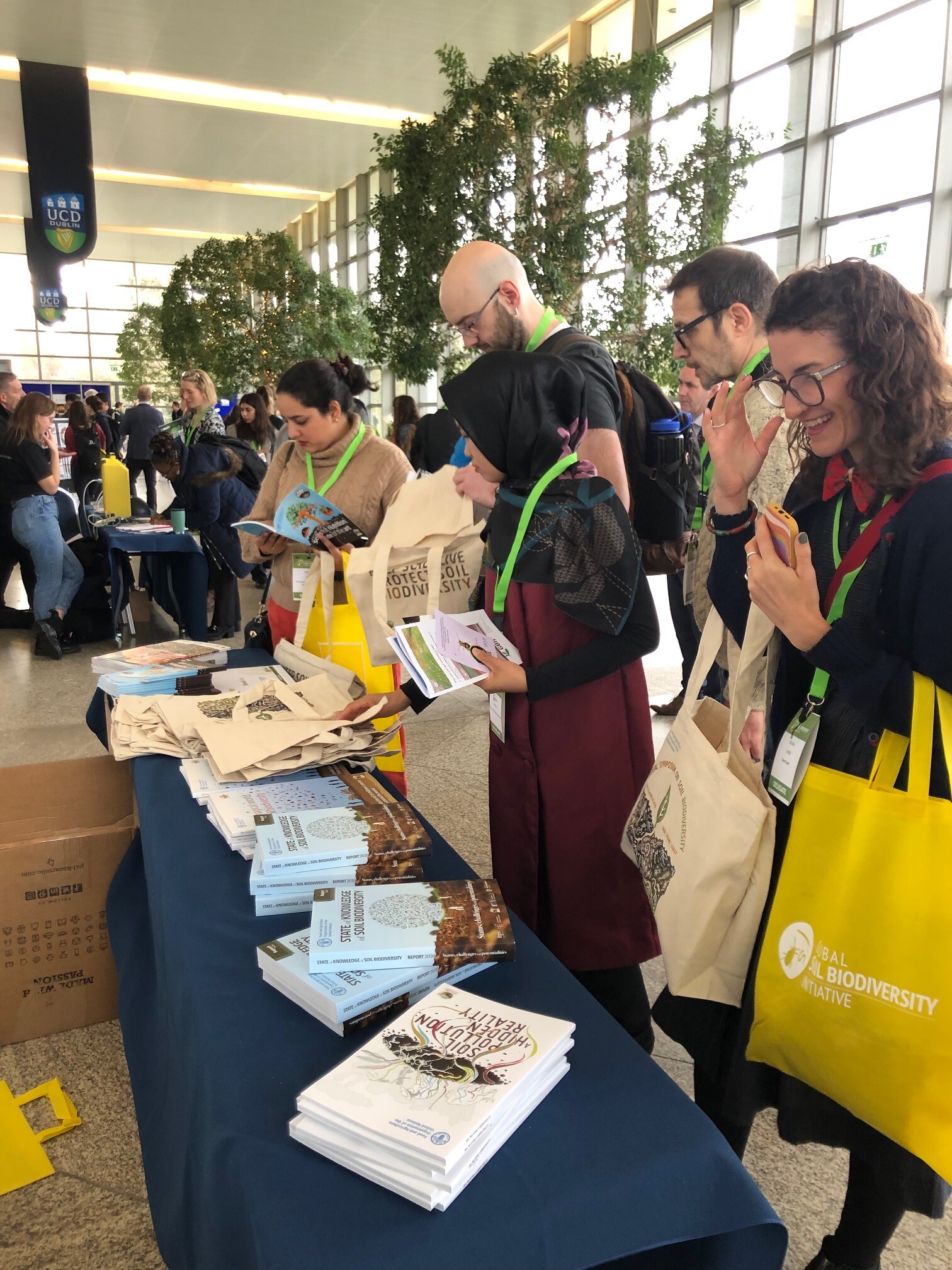GLOSOB takes root: towards a harmonized, country-driven effort to measure soil biodiversity
The 3rd Global Soil Biodiversity Conference was held in Dublin (Ireland) from 13 to 15 March 2023. The conference successfully brought together the world’s leading experts in this interdisciplinary field of soil biodiversity science and addressed urgent global challenges related to human, animal and plant health and the need for a more sustainable world. It provided the latest updates on soil biodiversity research and knowledge for scientists, policy makers, regulators, environmental agencies, conservationists, land user managers and other stakeholders in the sustainable use and conservation of soil biodiversity.


 On Tuesday 13, through a FAO’s sponsored and coordinated workshop with around 100 participants, FAO’s Global Soil Partnership presented the work and progress of the International Network on Soil Biodiversity (NETSOB) and the plans for the Global Soil Biodiversity Observatory (GLOSOB) to various stakeholders such as academia, policymakers, land users, and the private sector. Mr Peter de Ruiter, chair of NETSOB, gave an overview of the purpose, governance, and structure of NETSOB. The Network is divided into four thematic technical working groups, each with the task of producing products and work reports and organizing symposia. The chair and/or vice chair of each group provided an update on the activities and progress of their respective working groups.
On Tuesday 13, through a FAO’s sponsored and coordinated workshop with around 100 participants, FAO’s Global Soil Partnership presented the work and progress of the International Network on Soil Biodiversity (NETSOB) and the plans for the Global Soil Biodiversity Observatory (GLOSOB) to various stakeholders such as academia, policymakers, land users, and the private sector. Mr Peter de Ruiter, chair of NETSOB, gave an overview of the purpose, governance, and structure of NETSOB. The Network is divided into four thematic technical working groups, each with the task of producing products and work reports and organizing symposia. The chair and/or vice chair of each group provided an update on the activities and progress of their respective working groups.
George Brown, the chair of working group 1, presented the findings of a global survey that involved nearly 2 700 scientists and focused on current biodiversity initiatives and measurements. Survey's results have been shared with FAO, and a scientific publication summarizing the results is currently in progress. This working group is currently engaged in developing harmonized SOPs for enzyme activity and basal respiration, nematodes, QBSar (soil biological quality), ISO-TSBF (iso hand sorting methods), and molecular methods for soil microbial biodiversity (ITS, 16S with Illumina sequencing). These SOPs will served as guidelines for the Global Soil Biodiversity Observatory as standard methods for monitoring intended to be completed by the end of 2023.
 One of the suggestions pointed out for this group was that there is also a need to be able to forecast or project soil biodiversity (that should be added to the objective of this group). It was also suggested that the construction of a biodiversity observatory should rely on consultation from non-scientific stakeholders and from current observatory initiatives such as SoilBON.
One of the suggestions pointed out for this group was that there is also a need to be able to forecast or project soil biodiversity (that should be added to the objective of this group). It was also suggested that the construction of a biodiversity observatory should rely on consultation from non-scientific stakeholders and from current observatory initiatives such as SoilBON.
Zoe Lindo, who chairs working group 2 focused on developing field manuals that identify, explain and demonstrate good management practices to conserve and limit loss of biodiversity, described best practices to improve soil health and biodiversity such as reduced till, cover crops, reducing erosion, integrated livestock systems, and use of bioinoculants and fertilizers. Working group 2 is also inviting submissions of case studies that address conservation efforts to restore biodiversity. One consideration brought to this group is whether the introduction of invasive species (earthworms) that may benefit soil biodiversity should be considered a soil benefit.
Gianluca Bagnara was unable to attend in person, but had sent his pre-recorded presentation for work group 3 discussing the economics of biodiversity. The presentation focussed on the proposition of an economic model to determine the value of biodiversity and the importance of ecosystem services such as yield, marketed goods, erosion protection, water yield, and carbon sequestration. A question was raised about whether any intrinsic values can be associated with biodiversity.
Rosalina Gonzalez Forero was also unable to attend the conference, but provided her slides. The NETSOB chair guided the attendees through the slides and highlighted the need for effective policies and legal instruments associated with soil biodiversity, specifically policy aimed at promoting diversity, indicators and monitoring schemes. The presentation also mentioned a survey that was of interest to all participants. One participant suggested that a distinction be made between direct and indirect biodiversity policies.
In the concluding session of the workshop, Jacob Parnell presented the short, medium, and long-term goals and activities of each of the technical working groups based on input from Rosa Cuevas Corona. He also explained how these activities contribute to the initiatives of the Convention on Biological Diversity (CBD), the GLOSOLAN activities, and the UN Sustainable Development Goals.
Panel discussion
 Jacob Parnell presented the Global Soil Biodiversity Observatory (GLOSOB) to the workshop attendees. As mandated by the CBD and recommended in the State of knowledge of soil biodiversity report, FAO is establishing GLOSOB as a globally harmonized approach to country driven collection of soil biodiversity measurements.
Jacob Parnell presented the Global Soil Biodiversity Observatory (GLOSOB) to the workshop attendees. As mandated by the CBD and recommended in the State of knowledge of soil biodiversity report, FAO is establishing GLOSOB as a globally harmonized approach to country driven collection of soil biodiversity measurements.
The workshop presented the proposed GLOSOB's governance and action plan to the scientific community, leading to questions regarding stakeholder involvement (such as government funding and training, the role of existing national or regional biodiversity networks, and industry), the timeline for GLOSOB's establishment and implementation, and data management. Some concerns that were expressed include how countries that already have biodiversity inventory programs will interact, how to adapt methods to different environments, and how to build policy around practices that may be different in different soil types and climates.
During the workshop, some members expressed their concerns about GLOSOB, including the perception that it may be redundant with current programs such as SoilBON and that implementation may not be successful unless carried out through research institutions. The FAO team clarified that GLOSOB builds on existing initiatives and actions with the overall objective of being an inclusive effort filling an existing gap, since its work will be country driven and involve national institutions.
